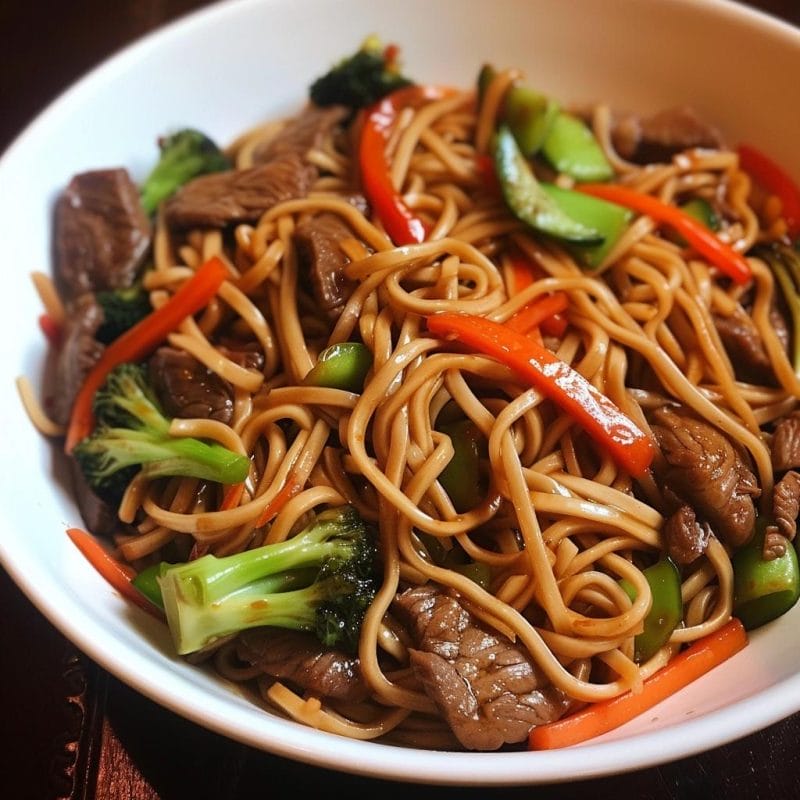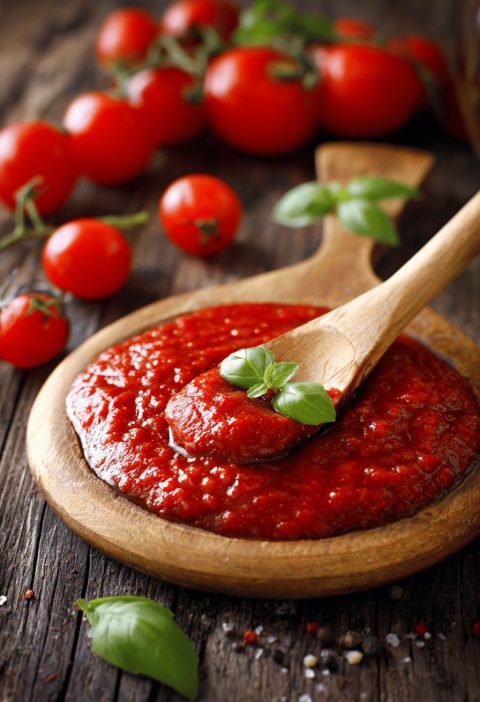Would you like to save this?
Beef Lo Mein is a popular Chinese dish that has found a place in the hearts of food lovers worldwide. This delightful meal combines tender beef strips with perfectly cooked noodles and a medley of crisp vegetables, all enveloped in a savory sauce. The dish is a testament to the balance and harmony of flavors and textures that characterize Chinese cuisine. The beauty of Beef Lo Mein lies not only in its taste but also in its adaptability, making it a favorite for both home cooks and professional chefs.
The Origins and Popularity of Lo Mein
Lo Mein, which translates to “tossed noodles,” has its roots in Cantonese cuisine. This dish traditionally uses wheat flour noodles, which are known for their elasticity and ability to absorb flavors. While the classic version includes a variety of meats and vegetables, the beef variant has gained particular popularity due to the rich, savory depth that beef adds to the dish. Over time, Lo Mein has evolved, with numerous regional variations and adaptations emerging around the world.
Ingredients and Their Importance
The ingredients for Beef Lo Mein are straightforward yet each plays a crucial role in creating the dish’s distinctive flavor profile. Here’s a breakdown of the key components:
- Noodles: The foundation of Lo Mein, typically made from wheat flour. They should be cooked until just tender, retaining a slight chewiness.
- Beef: Thinly sliced beef is essential. It should be cooked until golden brown to develop a deep, caramelized flavor.
- Vegetables: Carrots, broccoli, and onions add crunch and a range of flavors, from sweet to slightly bitter.
- Sauce: A mix of soy sauce, brown sugar, and beef bouillon forms the base, providing a perfect blend of salty and sweet with umami undertones.
- Garlic: Adds a pungent, aromatic element that enhances the overall flavor.
Step-by-Step Cooking Instructions
- Prepare the Sauce: Dissolve beef bouillon and brown sugar in hot water. Add soy sauce and set aside.
- Cook the Beef: Slice the beef into thin strips. In a hot skillet with sesame oil, cook the beef until golden brown, then remove from the skillet.
- Sauté the Vegetables: Using the same skillet, sauté onions until golden brown, then add carrots and cook until softened. Add broccoli and cook for a few minutes, then add pressed garlic.
- Combine Ingredients: Return the beef to the skillet with the vegetables. Pour the prepared sauce over the mixture and let it simmer.
- Add Noodles: Finally, add the cooked noodles to the skillet, tossing everything together to ensure even coating and integration of flavors.
- Serve: Transfer the dish to a large serving bowl and enjoy while hot.
Variations and Substitutions
One of the great aspects of Beef Lo Mein is its flexibility. Here are some variations and substitutions to suit different tastes and dietary needs:
- Protein Alternatives: Swap beef with chicken, pork, shrimp, or tofu for a different take on the dish. Each protein brings its unique flavor and texture.
- Vegetable Variations: Feel free to add or substitute vegetables based on seasonality and preference. Bell peppers, snap peas, mushrooms, and baby corn work wonderfully in Lo Mein.
- Noodle Options: While wheat noodles are traditional, you can use rice noodles, soba noodles, or even whole wheat pasta for a healthier twist.
- Gluten-Free: For a gluten-free version, use tamari or a gluten-free soy sauce and ensure the noodles are gluten-free.
- Spicy Kick: Add a bit of chili oil, sriracha, or sliced fresh chilies to give the dish a spicy dimension.
Tips for the Perfect Beef Lo Mein
- Preparation is Key: Have all ingredients prepped and ready before you start cooking. The actual cooking process is quick, so preparation helps in seamless execution.
- High Heat Cooking: Cooking on high heat ensures that the beef and vegetables cook quickly, retaining their texture and flavor without becoming soggy.
- Balance Flavors: Taste the dish as you go and adjust the seasoning. The balance of sweet, salty, and umami is crucial for an authentic flavor.
Conclusion
Beef Lo Mein is more than just a dish; it’s an experience that brings the essence of Chinese cuisine to your kitchen. Its versatility allows you to experiment with various ingredients, making it suitable for different tastes and dietary preferences. Whether you’re preparing a quick weeknight dinner or hosting a gathering, Beef Lo Mein is sure to impress with its rich flavors and delightful textures.







